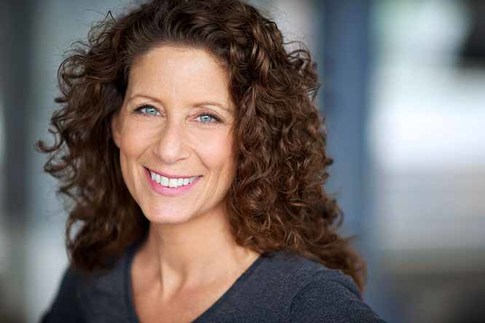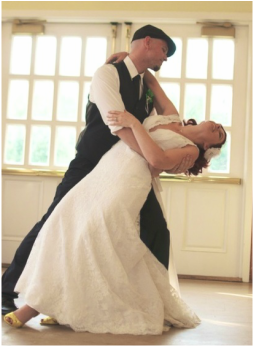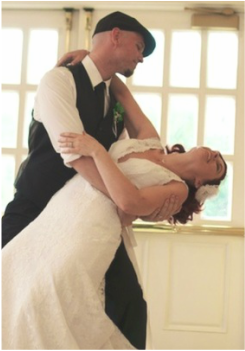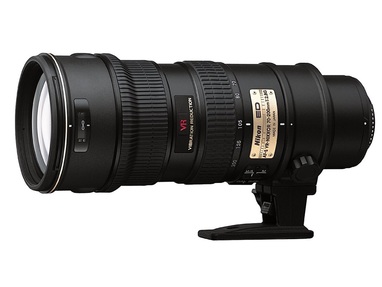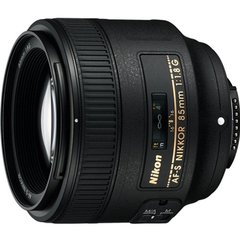|
I'm assuming you found this article after reading "Best Camera for Headshots." But if not, feel free to check that one out too. If you're an actor looking to take headshots of yourself and don't have tons of money to drop on lenses, cameras, and lighting equipment, be sure to check out my Take Your Own Headshot tutorial. You can take a great shot of yourself and have it digitally edited with us to blur the background and make it look like a professional shot! Now, onto the article. Before we go into lenses for headshots, one thing must be explained: The Crop Factor. The crop factor can be defined as a phenomenon that occurs when you shoot with a smaller sensor and you don't see as much around the edges of the frame. Imagine a large piece of 35 mm film: this is the size as a full-frame sensor. A 1.5x crop sensor (or APS-C sized sensor) is a bit smaller than film. Therefore, it only picks up a portion of the frame that the full-frame sensor would pick up. See the images below: The images demonstrate how a full frame camera would pick up a wider area than a crop camera if both were shooting with the same lens. This means you'd have to use a wider angle lens if wanted the same area to be picked up on the crop sensor camera. To figure out which lens would be used on a smaller sensor, such as a 1.5x crop sensor, simply multiply the focal length of the lens (the MM number) by the crop factor. Imagine a 50 mm lens. On standard film, a 50 mm lens looks normal. Things appear just as the eye would see them, with no distortion or magnification. However, on a crop sensor, the 50 mm lens would look just like a 75 mm lens (50 mm X 1.5 = 75 mm) on a full-frame sensor. Meaning basically, if you put a lens on a crop sensor, it’s generally going to be more zoomed-in looking. This is why you need to buy the right lens for the type of sensor your camera has. I highly recommend a 70-200 mm f/2.8 VR I zoom lens if you own a full frame camera and can afford it because it gives you the most options for headshot photography and can actually even be used if you have a crop-sensor camera. Don't buy the VR II because it's too expensive and a weird side-effect of it is that it zooms out when you focus close, which effectively changes it into a 150mm lens instead of a 200mm lens when you shoot headshots. Now, if you're on a more limited budget and have a crop sensor camera, I recommend you buy an 85 mm f/1.8 lens. With the crop, it winds up equaling about 127mm, which is a great length for headshots. And because of the wide aperture at f/1.8 (read about aperture here), you can blur out the background even more and the camera will let in more light. So in summary, if you have a full-frame camera you need a 70-200mm f/2.8. If you have a crop-sensor camera, you should get an 85mm f/1.8. But remember, these recommendations can always be switched around based on your preferences or needs. For instance, a 70-200mm f/2.8 isn't actually necessary for headshots. I often shoot with a 135mm f/2 for my full-frame sensor camera. And if I ever shoot with a crop-sensor camera, I'll sometimes have fun and use my 50mm f/1.4 for a more stylized look.
James
11/17/2012 05:27:51 pm
The one thing I don't agree with here is the use of a 50mm on a crop for portraits. What I mean by this is that it still renders the image the way a 50 does even though the FOC becomes that of a 75mm. You get in tight and you've go that wonderful distortion the nikon and canon lens are so good at. Stick with the 70-200 crop or no crop, just take a step back ;) Also, get the 70-200 VRII if you're a nikon shooter shooting full frame. The VR I is atrociously soft. 11/18/2012 04:17:00 am
Hey James, Comments are closed.
|
Note: If you're visiting this site from a mobile phone, the menu option to navigate to other pages is located at the top left of the site. Click this symbol: ☰
|
|
Locations
NY: 2 West 46 Street, Suite 1500 NJ: 611 N Maple Ave., Suite 9 – Ho Ho Kus |
Copyright © 2024 MJB Home Entertainment, LLC

